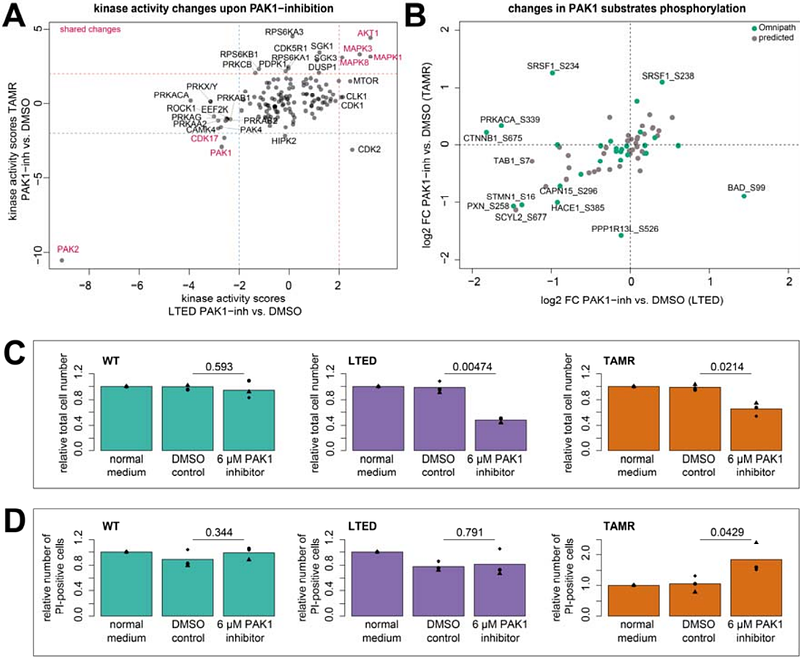PAK1 activation drives divergent resistance mechanisms to aromatase inhibition and Tamoxifen in a luminal A breast cancer model

PAK1 activation drives divergent resistance mechanisms to aromatase inhibition and Tamoxifen in a luminal A breast cancer model
Schwarzmueller, L.; Mueller, J.; Vlachavas, E.-I.; Beumers, L.; Fleischhacker, L.; Burmester, S.; Helm, D.; Koerner, C.; Wiemann, S.
AbstractBreast cancer is the most frequent malignancy and the second leading cause of cancer-related mortality in women worldwide, and is a heterogeneous disease regarding driver mechanisms, therapies, and outcome. Estrogen receptor-positive (ER+) tumors are treated with endocrine therapies such as Tamoxifen or aromatase inhibitors (AI), aimed at disrupting tumor-promoting estrogen signaling. While these therapies are initially effective, resident tumor cells can develop resistance, leading to relapse. The p21-activated kinase 1 (PAK1) is a key regulator of multiple oncogenic signaling pathways and has been implicated in resistance to Tamoxifen. However, it remains unclear, whether PAK1 also affects the response to other endocrine therapies. Using global phosphoproteomic profiling of endocrine resistant cell line models, we observed elevated PAK1 activity in cells resistant to Tamoxifen and to estrogen deprivation, respectively, with further increases following EGF stimulation. Pharmacological inhibition of PAK1 effectively reduced cell proliferation in both resistance models, however, with distinct effects on PAK1 downstream substrates and pathways. In the Tamoxifen resistance context, PAK1 reduces apoptosis via inhibition of the pro-apoptotic protein BAD, whereas in the AI resistance model PAK1 rather triggers proliferation via RAF1. Our findings position PAK1 as a common mediator of resistance to different endocrine therapies and offer insights into the distinct signaling networks that are involved. In summary, our results suggest that targeting PAK1 may present a novel therapeutic strategy to overcome endocrine therapy resistance in ER+ breast cancer, potentially enhancing the efficacy of both Tamoxifen and AI treatments.